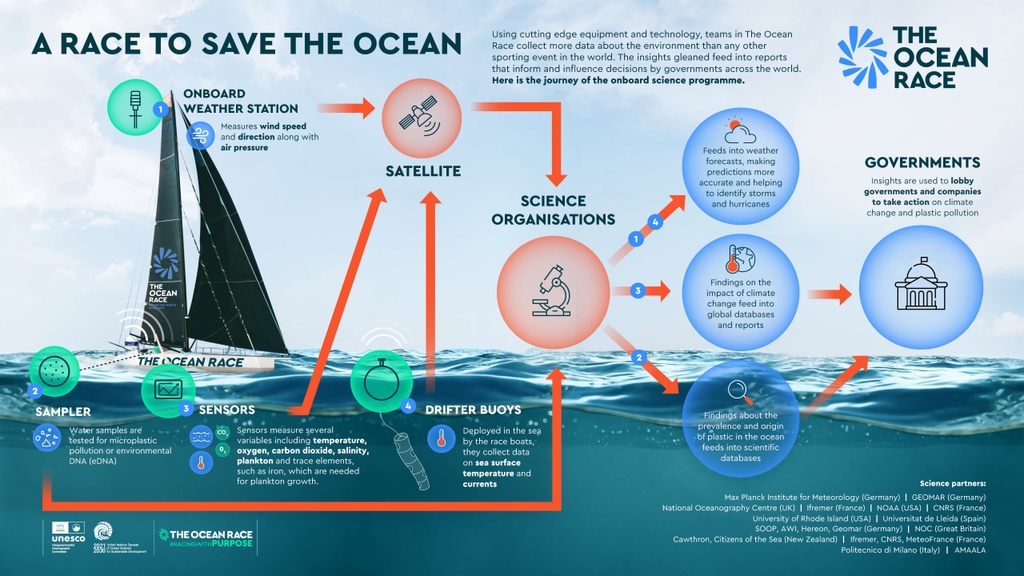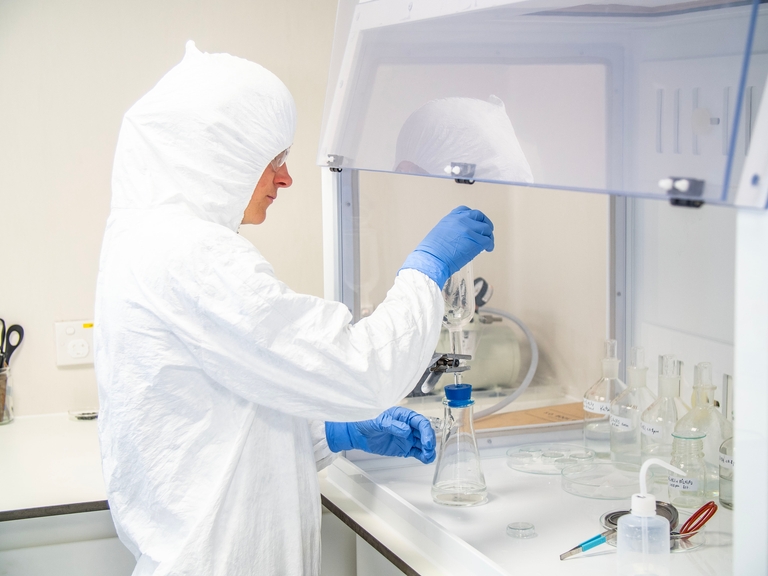Science
Capturing Ocean Data
The health of the ocean is declining. Issues such as climate change, pollution and overfishing are all taking their toll, but exactly what the impacts are and where they occur can be harder to determine. For researchers investigating the state of the seas, gathering data can be tricky, with some parts of the ocean hard to reach and expeditions costly.
This is where The Ocean Race is making a difference. All of the boats that participate in our races are kitted out with specialist equipment that gathers vital information about ocean health. As they sail across the world, data is continuously collected by the teams, including from the most remote parts of the ocean. It is provided, much of it in real-time, to world-leading science organisations that work to improve understanding about the marine environment and the threats it faces.

Thanks to the support of our teams, we are able to gather a wide range of data, including:

Click here to view infographic in full size
All of the data is open-source and shared with The Ocean Race’s science partners - organisations across the world that are examining the impact of human activity on the ocean. From there it feeds into reports that inform and influence governments across the world, including reports from the Intergovernmental Panel on Climate Change (IPCC) along with databases such as the Surface Ocean Carbon Dioxide Atlas, which provides data for the Global Carbon Budget, a yearly assessment of carbon dioxide that informs targets and predictions for carbon reduction.
Measurements from the surface drifter buoys and onboard weather stations also support efforts by international organisations who work together as part of the Global Ocean Observing System, a network aimed at improving understanding of our one ocean.
The scientific data contributes to the Ocean Decade Odyssey project which is an endorsed project of the UN Decade of Ocean Science (2021-2030).
The Ocean Race 2022-23 featured our most ambitious science programme to date (and what we believe is the most comprehensive science programme of any sporting event in the world). During the 32,000 mile long race, 4.3 million measurements of essential ocean parameters were taken. For the first time ever we made the data visible to the public with the launch of our live data tracker. Explore the data that was collected by teams during The Ocean Race 2022-23 and the data from The Ocean Race Europe 2025 by clicking on the image above.

Our Science programme can be traced back to 2001, evolving over the subsequent Races to gather more measurements across more types of data. As well as contributing to studies about the state of ocean health that are published in the critical reports mentioned above, the findings of the Race’s Science programme has made headlines across the world.
Analysis of water samples gathered during the 2017-18 edition of the Race in 2017-18, showed microplastics at Point Nemo - the furthest place from land on the planet, where the nearest people are in the International Space Station. This was the first time that microplastics had been found in such a remote location and it contributed to global awareness on the spread of plastic pollution in the ocean.
A deeper analysis of water samples collected during the inaugural edition of The Ocean Race Europe in 2021 provided significant insights into the levels of plastic fibres in Europe’s waters. (View the report here.)
The Ocean Race Science programme is run in collaboration with world-leading institutes, including:
• SOOP, AWI, Hereon, Geomar (Germany)
• Ifremer, CNRS, MeteoFrance (France)
• NOC (Great Britain)
• Politecnico di Milano (Italy)
• Cawthron, Citizens of the Sea (New Zealand)
• AMAALA